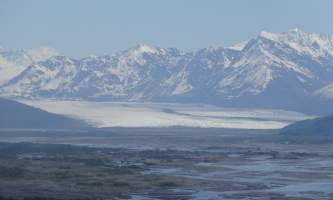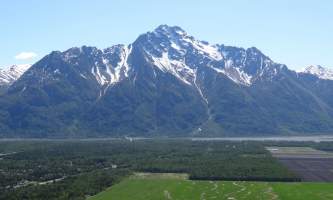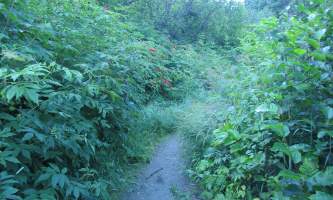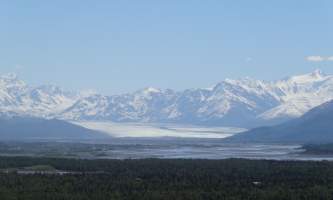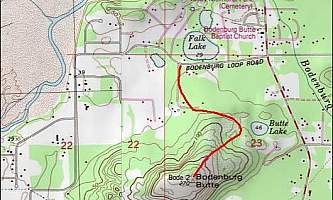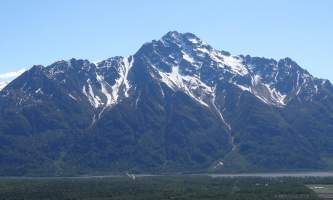Why Take This Hike
With a length of just 1.5 miles and a summit reaching only 874 feet, West Butte Trail on Bodenburg Butte—a 45-minute drive north of Anchorage—makes for a fine family outing. But even if you’re a more experienced hiker, don’t let the butte’s dwarf-like height dissuade you. This small bump in the center of a grand alluvial plain offers far-reaching views from its summit; plus, the climb includes a pulse-quickening 0.25 miles of stairs up the steep north face.
The Details
Walk the road a few hundred feet from the parking area on East Mothershead Lane to the reach the gravel trail, which is so wide at first that families can walk up to four abreast. The climb begins gradually, as the trail winds up and over the hollows along the butte’s lower flank.
When you reach the base of the precipitous north face, you’ll have to crane your neck to look up the steep slope. But don’t let the near-sheer slope intimidate you; instead, it’s here you’ll begin to appreciate what makes this trail truly unique.
At the base of the slope you’ll reach a staircase. At the top, you’ll find another staircase. Then another. The stairs continue, either with a rope or wooden railing, and the novel experience of climbing stairs up the side of a butte may help keep exhaustion at bay. In fact, you may find yourself admiring the time, material, and route-mapping that went into building these stairs.
After some 0.25 miles of climbing stairs, you step onto the summit ridge. You’ll then dip in and out of a few shallow gullies before reaching one final flight of stairs leading up to the great open rock that forms the wide, rounded summit.
You may wonder how this one rock managed to withstand the weight of so many glaciers for so many millennia. But don’t let the geology distract you from the gorgeous view—one you may not expect such long views from such a small bump. Look north to the ramparts of Arkose Ridge and Bald Mountain Ridge, then south to the peaks of the Chugach Mountains. To the southeast, you can see all the way to the blue-ice snout of Knik Glacier and the snow-covered peaks channeling its great power. Then look west, out to Knik Arm, into which flow glacial rivers from all over the state.
Author: Shawn Lyons


